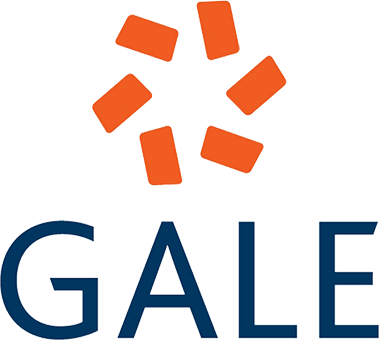Metakarp Kırıklarında Açık Redüksiyon ve İnternal Fiksasyon Sonrası Erken Dönem Başlanan Fizik Tedavi ve Ergoterapi Uygulamalarının Günlük Aktivite Düzeylerine Etkilerinin İncelenmesi
Celaleddin Bildik1, Barış Yılmaz21Ataşehir Florance Nightingale Hastanesi, Ortopedi ve Travmatoloji Kliniği, İstanbul, Türkiye2Sağlık Bilimleri Üniversitesi, Fatih Sultan Mehmet Eğitim ve Araştırma Hastanesi, Ortopedi ve Travmatoloji Kliniği, İstanbul, Türkiye
GİRİŞ ve AMAÇ: Metakarp kırıkları sık görülen kırıklardan biridir. Cerrahi olarak tedavi edilen metakarp kırıklarının postoperatif dönem rehabilitasyonunda primer amaç ilgili bölgenin lökomotor fonksiyonunu, yaralanma öncesi fonksiyonuna en yakın hale getirmektir. Çalışmanın amacı, metakarp kırıklarında plak osteosentez uygulaması sonrası erken dönem başlanan fizik tedavi ve ergoterapi uygulamalarının günlük yaşam aktivite düzeylerine etkilerinin incelenmesidir.
YÖNTEM ve GEREÇLER: Metakarp kırığı nedeniyle opere edilen 20 gönüllü birey ile postoperatif rehabilitasyon programına başlandı. İlk aşamada postoperatif aynı gün ağrı kontrolü sağlandıktan sonra hastalara parmak açma kapama, el bileği eklem hareket açıklığı egzersizleriyle başlandı. İkinci aşamada fizik tedavi egzersizleri verildi. Üçüncü aşamada ise ergoterapi programı uygulandı. Kol, Omuz ve El Sorunları Anketi, Milliken Günlük Yaşam Aktivite Değerlendirmesi ve El Kavrama Kuvveti Ölçüm Testi postoperatif erken dönem, fizik tedavi uygulaması sonrası ve ergoterapi uygulaması sonrası olmak üzere her hasta için üçer kez yapıldı.
BULGULAR: Operasyon sonrası, fizik tedavi sonrası ve ergoterapi sonrası yapılan Kol, Omuz ve El Sorunları Anketi sonuçlarının değerlendirilmesinde ergoterapi sonrası skorlar istatistiksel olarak anlamlı farklı (p<0,001) olarak tespit edildi. Çalışmada değerlendirilen Milliken Günlük Yaşam Aktiviteleri Değerlendirmesi ve El Kavrama Kuvveti Ölçüm Testlerinin sonuçlarının karşılaştırılmasında da ergoterapi sonrası skorlar istatistiksel olarak anlamlı farklı (p<0,001) olarak saptandı.
TARTIŞMA ve SONUÇ: Cerrahi olarak tedavi edilen metakarp kırıklarının postoperatif 8 ila 16 haftalık süre içinde üç haftalık fizik tedaviye ergoterapi uygulamalarının eklenmesi daha düşük Kol, Omuz ve El Sorunları Anketi skoru, daha iyi Milliken Günlük Yaşam Aktivitesi skoru ile kavrama kuvvetinde daha yüksek etkinliğe sahiptir.
Effects of Early Period Physical Therapy and Ergotherapy Applications on Daily Activity Levels After Open Reduction and Internal Fixation in Metacarpal Fractures
Celaleddin Bildik1, Barış Yılmaz21Department of Orthopaedics and Traumatology, Ataşehir Florance Nightingale Hospital, Istanbul, Türkiye2Department of Orthopaedics and Traumatology, University of Health Sciences, Fatih Sultan Mehmet Training and Research Hospital, Istanbul, Türkiye
INTRODUCTION: Metacarpal fractures are one of the most common fractures. The primary goal in the post-operative rehabilitation of surgically treated metacarpal fractures is to bring the locomotor function of the relevant region closer to its pre-injury function. The aim of our study was to examine the effects of physical therapy and ergotherapy applications, which are initiated after the early period of plate osteosynthesis in metacarpal fractures, on the activity levels of daily life.
METHODS: A post-operative rehabilitation program was started with 20 volunteers who had undergone an operation due to a metacarpal fracture. In the first stage, after pain control was achieved on the same post-operative day, patients were started with finger and wrist range of motion exercises. In the second stage, physical therapy exercises were given. In the third stage, the ergotherapy program was implemented. The Disabilities of the Arm, Shoulder, and Hand (DASH) questionnaire, Milliken Daily Living Activity, Assessment, and Hand Grip Strength Measurement Test were performed 3 times for each patient in the early post-operative period, after physical therapy, and after ergotherapy.
RESULTS: In the evaluation of the DASH scores which were performed after the operation, after physical therapy, and after ergotherapy, the scores after ergotherapy were found to be statistically significant (p<0.001). In addition, when comparing the results of Milliken scoring and Hand Grip Strength Measurement Tests, the scores after ergotherapy were found to be statistically significant (p<0.001).
DISCUSSION AND CONCLUSION: Three weeks of combined physical therapy and ergotherapy for surgically treated metacarpal fractures within 816 weeks post-operatively have been shown to have better functional outcomes, better grip strength, and higher efficacy compared to physiotherapy alone.
Makale Dili: İngilizce




















